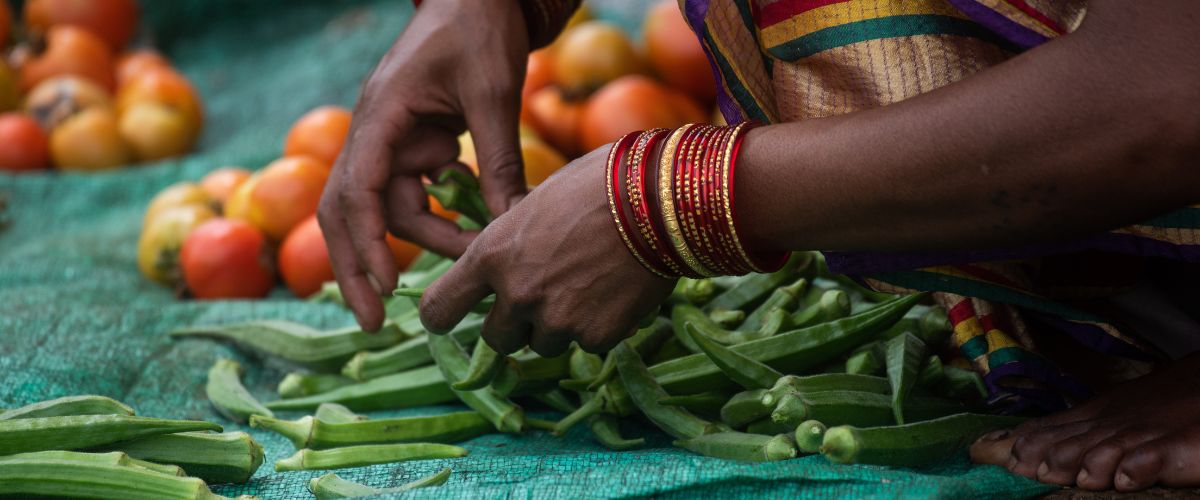Trek leader, Ray Baker, recalls a particularly memorable trip to Nepal to research a new tour…
In April 2000, I did a research trek into the Manaslu area of Nepal. The trek went well off the beaten trail into an area rarely visited by foreigners. Until…
There goes the planning
My carefully planned itinerary was blown to smithereens on the first day out. A broken- down bus blocked our progress along a narrow road and thwarted our journey to the trek starting point.
We had to turn around, drive for a few more hours and commence the trek from the ancient town of Ghorka. This meant that we lost a day and had to play catch-up for the rest of the trek. As recompense, we were lucky enough to visit the impressive, well-preserved temple and fortress above Ghorka.
Springtime – ah, the sights to behold!
After six days of easy trekking up the Buri Gandaki Valley, we branched off the main trail into an area of sublime beauty.
Our route followed a rough goat track up a valley surrounded by snow peaks. Being springtime in Nepal, the rhododendron trees were in full bloom with the flowers ranging in colour from pure white to deep crimson.
The locals introduced us to some amazing and delicious bush tucker: Himalayan garlic, mountain asparagus, wild nettle soup, wild leeks and various edible fungi.
Gradually we ascended above the tree line and reached a high camp below Rupina Pass. The crossing-day started out early morning in brilliant weather.
From our high camp it took four hours over snow-covered terrain to reach the top. The last hour was very steep going and we needed to fix a safety rope up the last 100 metres.
From the top of the pass the views were simply outstanding. Rugged snow peaks surrounded us on three sides and to the south the scene was a sea of fluffy white clouds way below us.

An interesting descent
We dropped down a fixed rope for 100 metres to lunch, and then things got interesting. Our descent followed a 10 to 15 metre-wide, steep, snow covered gully. It was so steep that we had to descend the whole way on fixed ropes. Fourteen separate roped sections were needed to reach camp. The guides were fantastic that afternoon, in control, with first class teamwork.
The next day we had an option; take the high trail or the low trail. We took a vote and the vote was – take the low trail.
We descended into a beautiful conifer forest and had a lunch break in warm sunshine beside a clear mountain stream. It was a time for washing, eating and relaxation. After a long lunch break we continued to descend, spirits soared, morale was high.
Just when you thought you were on track…
Continuing our descent, we could see that the trail ahead was obliterated by an old landslip; nothing to do but change course. We veered onto a high trail in the direction we were supposed to go. No worries; so far, so good.
Then the sky darkened, followed by light rain. We found ourselves on a narrow trail, high up and very exposed… heavy rain pelted down…. Then a section of trail that was so steep and potentially hazardous we had to fix a safety rope.
As we began the most treacherous section the wind picked up and it started to hail… yes, hailstones the size of peas that really stung. One had to yell to be heard. The trail dropped into a steep canyon where we crossed slippery rocks over a raging stream. When we reached the other side, I could see real fear in the eyes of a few people. Wow.
Mm, anyone know where we are?
After another four hours of steep uphill grind we came upon open pastures and a good place to camp. Our whereabouts begged the question – Hamiharu Kaha Chha? Where are we?
A long earnest discussion with the guides followed. We weren’t lost; just geographically embarrassed.
We knew where we were. It was just that there were no trails to get us out of there.
The next day was one of those mega epics that trekkers dread. A tough up followed by a gnarly, slippery down, another river crossing then a three-hour, steep, bush bashing, gruelling climb through dense, scratching foliage. Luckily, we found a level area for a lunch spot. It’s amazing how a mug of hot, sweet tea and a couple of big bowls of spicy, steaming noodles can turn things around.
Another easy 45 minutes found us on a snow-covered pass. A guide who’d gone ahead to reconnoitre met us and said, “Good news, I’ve found a trail”. Down a bit and we arrived at a big plateau. Great, some easy trekking for a change!
But, the trail soon dropped steeply into a canyon. Yet another river crossing and then up the other side. Up for two hours to another plateau and a brief period of smooth going before things turned very ugly.

On a knife’s edge
The plateau ended and became a rocky, knife-edged ridge. The clouds obscured the sun. Two o’clock in the afternoon and it was very dark. It began to rain, then hail, and then snow.
The snow didn’t last long. It was replaced by horizontal gusts of cold wind that brought flurries of driving sleet. Every step required an intense level of concentration. The trail was narrow, slippery, sometimes steep, sometimes simply terrifying. These conditions continued for three hours. My hands and feet were freezing.
We reached camp with about 10 minutes of daylight left… I could have kissed the ground; never have I been so happy to be in camp. A hot cuppa followed by an hour in my sleeping bag and I’d thawed out sufficiently to feel human again. We had walked for 12 hours.
Strange these foreigners… yep, off the beaten track
The next morning brought better weather and an exhilarating descent through dense rhododendron and conifer forests. I’m not sure how many metres we descended, but it took five and a-half-hours of steady, unrelenting downhill to reach a village named Apum, where we stopped for lunch. If we weren’t totally stuffed by the previous day’s exertions, today’s walk managed to play havoc with our knees.
It was obvious that the locals hadn’t seen many foreigners before, if ever. They stood and stared and stared at us for the ninety minutes we were there.
It was a novelty for us too – our first sign of civilisation for 10 days. The afternoon walk was a delight; along a flat, shaded trail, through scenic villages.
Now, all totally wrecked, we faced a long, nine-hour day. First along a trail high above a valley floor to lunch. We were now in low altitudes, about 1000 metres. It was a hot, still day with a blinding sun.
The afternoon walk was along the valley floor in stifling conditions and little shade. At least my boots were dry for the first time in four days.

Life as we know it… or close enough
We camped on the outskirts of a village that night. The village had a shop with a refrigerator. The fridge contained lots of cold beers. Tall bottles of San Miguel and Tuborg. The shop also sold rum, coke and 7-Up. We bought some chooks. A feed, a few drinks with a few laughs, and suddenly the aches and pains disappeared.
Back in Kathmandu for three fun-filled nights then it was on the big silver bird for the long flight home. It’s safe to say this trek didn’t make the brochure.
Home, family, the office and time to start planning the next trek… so life goes on… and what a good life.










